Report from the frontline: ‘Hell on earth’
Oren Rosenfeld is an Israeli Emmy-award winning documentary filmmaker and photojournalist. He was among the media contingent that visited the Hamas massacre sites of Supernova and Kibbutzim Kfar Aza and Be'eri.
Warning: Graphic content.
No sooner had the world begun learning the extent of the recent atrocities committed by Hamas than there were those who began denying their validity.
Those who attempted to downplay or outright accuse Israel of fabricating these heinous acts.
And it’s ironic given that much of the photos and video recording Hamas’s barbaric murders were indeed captured and disseminated by the Hamas terrorists themselves.
Yet, too often in the fetid cesspool of social media did I see users question if indeed 40 babies were actually incinerated? And were they actually beheaded?
(And I can’t believe that is a sentence I am writing in 2023; not 1943).
Yes. It was true … My God, how I wish it wasn’t.
And finally, I understood what it means for the world to gaslight, disbelieve and outright deny a people’s experience of persecution; again, something I thought we could now abandon to the annals of history.
I immersed myself in the cesspool last week; 20 hours of each day consumed by the latest news coming out of Israel as I managed The AJN’s social media platforms.
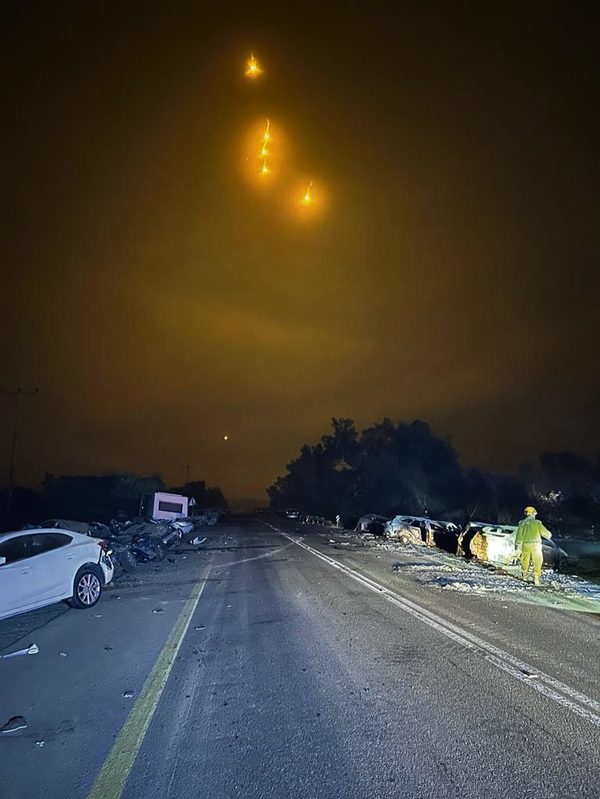
Amongst the many Israeli journalists that I follow, is Emmy-award winning documentary filmmaker and photojournalist, Oren Rosenfeld. We had connected at some point during The AJN’s Malka Leifer coverage, and occasionally comment on each other’s social media posts.
Three days following Hamas’s slaughter spree, Oren was on the ground with the press contingent, visiting the sites of the Supernova music festival and Kibbutz Kfar Aza, followed by Kibbutz Be’eri the next day.
It was 2am here when I checked in with him and asked if there was anything he wanted to share with Australia. He offered to send his photos to me.
As a human being, I wanted to say no, thank you. But as a journalist, I knew I had a responsibility to say yes.
The world needs to know. To never deny. To never forget.
On the vibration of his next message, my stomach fell to its pits. 22 photos from Supernova.
I picked up my phone, exhaled deeply, and opened his notification, bracing myself for the images that remain seared into my mind.
A dumpster of human silhouettes – blackened and tangled. A burned mobile phone. A bloodied commando boot. A gold necklace in black ash. Embers that continue to smoulder. Cars; theirs, abandoned with artillery; ours, mangled steel. The red of rockets scorching the night sky above. A sea of sallow bodies – maybe 100 – under the tent, body parts peeking out from beneath the sheets of plastic and blankets: bound wrists, an upright clenched bloodied fist, a man’s bare stomach.
From Kfar Aza – 37 more photos.
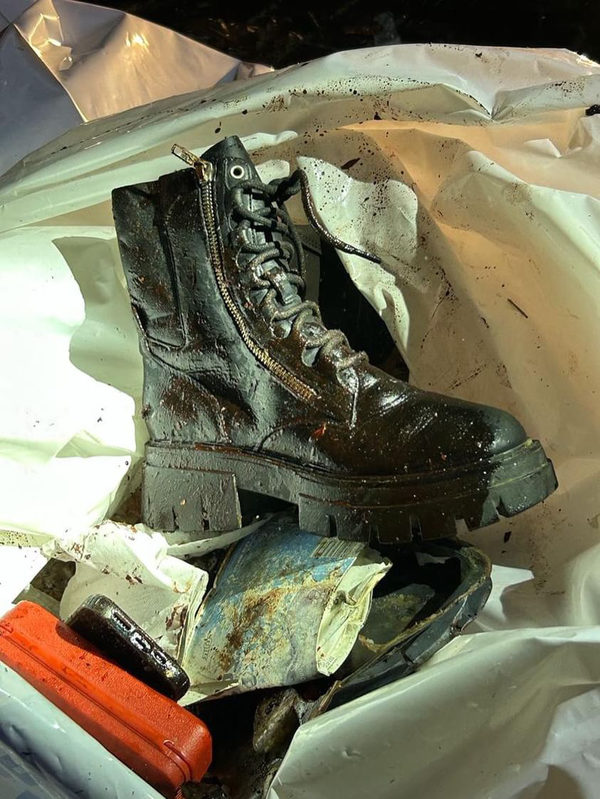
Israeli tanks. Stretchers of black plastic. The bloated and distended bodies of terrorists, littering the kibbutz grounds. Scores of armed IDF soldiers overseeing the retrieval. Uprooted trees. Homes reduced to rubble. Bullet holes in kitchen walls and a fallen tin of opened chickpeas. The twisted remains of a paraglider. The front door, keys and hamsa keyring still hanging from the keyhole, punctuated with bullets and a spray of blood.
Under non-stop rocket fire in his hotel room in Ashkelon, Oren reflected on the scenes he had captured at Kfar Aza.
“We arrived at Kfar Aza today in a convoy of journalists with a heavy IDF presence and saw hell on earth. There were bodies of the Hamas jihadist terrorists everywhere. The stench of death was strong, with the bodies of both terrorists and victims lying near each other, in the 30 degree heat, and flies,” he shared.
“I counted over 35 Hamas bodies only in the area of the kibbutz. We saw one terrorist’s motorcycle. The licence plates were written in Arabic, and said, ‘Your time is up!’ We later learned this was on many of their motorcycles, so they were very prepared for the attack.
“The water pipes were leaking, and it was mud mixed with rivers of blood, debris and burnt houses.”
He continued, “There was a horrific feeling that something awful had taken place in this killing field. The general and other officers said dozens of terrorists massacred everyone: women, children, entire families. Babies and toddlers were decapitated around the kibbutz.
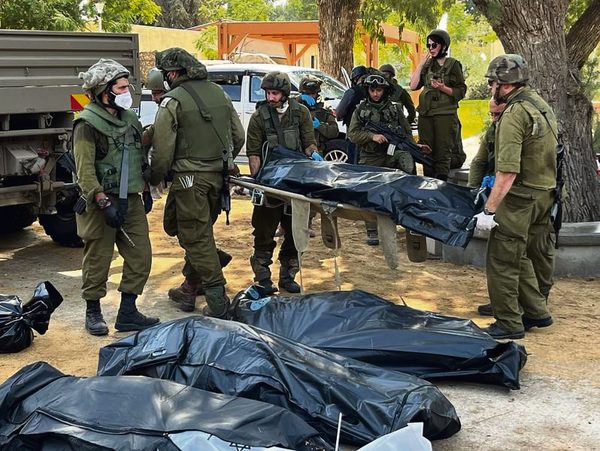
“It was a gruesome massacre from 6.30am to 2.30pm [on Saturday, October 7], until the army arrived and killed the terrorists.”
The next day, Oren then visited Kibbutz Be’eri.
When we spoke again at 2am, he described it in one word: “horrific”.
His message continued, “So many children slaughtered by Hamas. I can’t stop crying. Horrendous, not human.
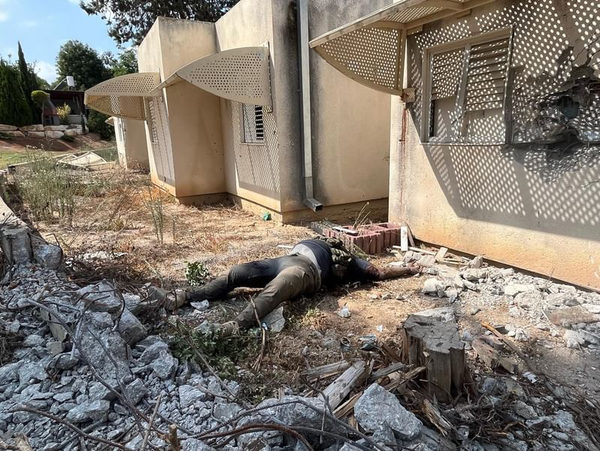
“Hamas is ISIS … Fellow journalists told me they’re worse than ISIS.”
He then proceeded to send me photos and videos shared with him – several filmed by Hamas.
Murdered Israeli soldiers – some beheaded, others with their throats being stomped on. Israeli civilians slain in a communal kibbutz bathroom. Bodies incinerated in cars.
And the burned and decapitated babies.
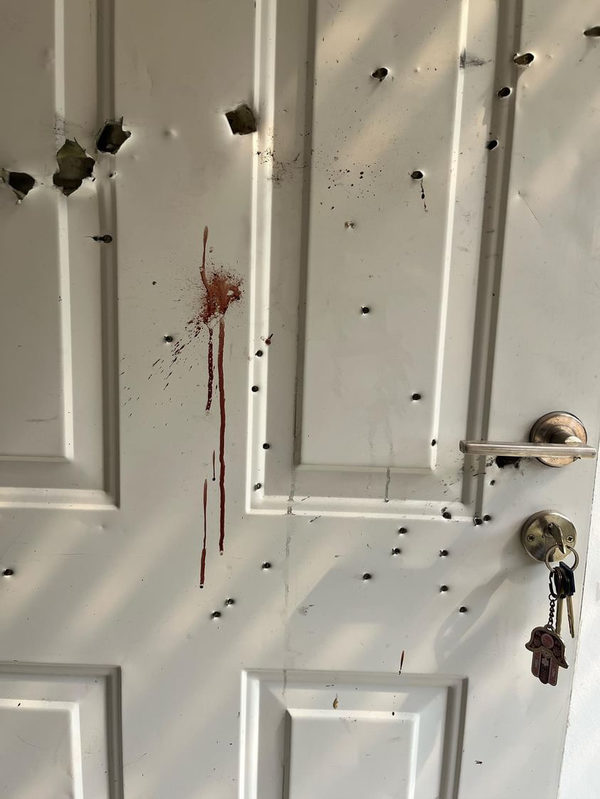
Oren spoke to the ZAKA volunteers and high-ranking generals who confirmed the scenes.
“Bodies also had their genitals cut off and put in their mouth,” he was told.
“[A ZAKA volunteer] told us of a little girl that had a rake through her head.”
Recounting the events of the day, Oren reported, “The Israeli army called and asked if we can meet them in one hour at a gas station inside the closed military zone around Gaza to take us inside Kibbutz Be’eri.
“More than 100 of its residents were brutally slaughtered; burnt alive in their homes or shot if they came outside. The battle to retake the kibbutz cost the lives of many soldiers from the most elite units. Many terrorists where captured alive.”
Oren called the drive to the kibbutz, “disturbing”.
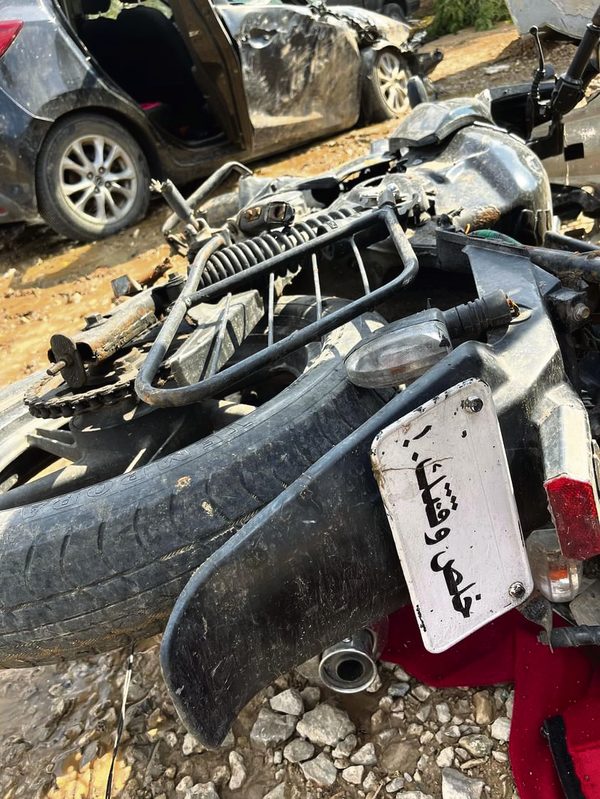
“First, I started seeing shot-up cars along the road. One army van was riddled with bullets. More cars were burnt along the side of the road. We passed the bus stop where dash cam video and phone footage from inside suggest the most gruesome massacre of young party goers [at Supernova], a grenade was thrown in and they were all shot.
“We approached Be’eri and the area was full of soldiers and armoured vehicles and many tanks. It looked like war, like a movie set.
“The kibbutz was destroyed … There were bodies everywhere … the odour of death. The smell of fire and smoke was disturbing.”
Oren’s photos showed more mass destruction – burned out cars and demolished houses. Family photos strewn across a pile of rocks and concrete, remnants from what was once a home.
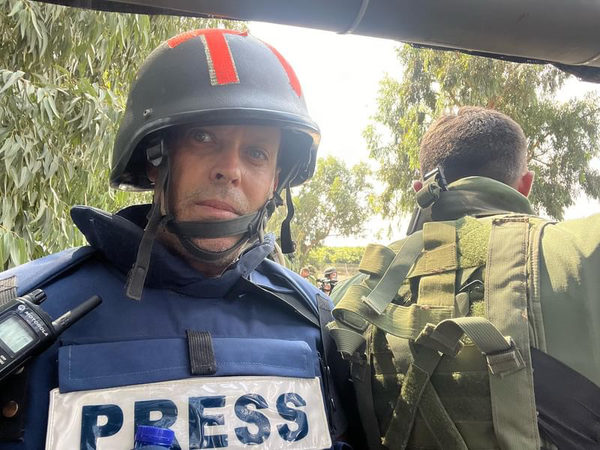
He continued, “The bodies of the soldiers were taken first because they could be easily identified, a ZAKA volunteer shared. He took us in his van and showed us around, explaining that he’s never, ever seen such cruelty; babies burnt and shot, women and children by the dozens – a massacre.
“Their only crime was being Israeli,” said Oren.
“Being Jewish … Being Yahud.”
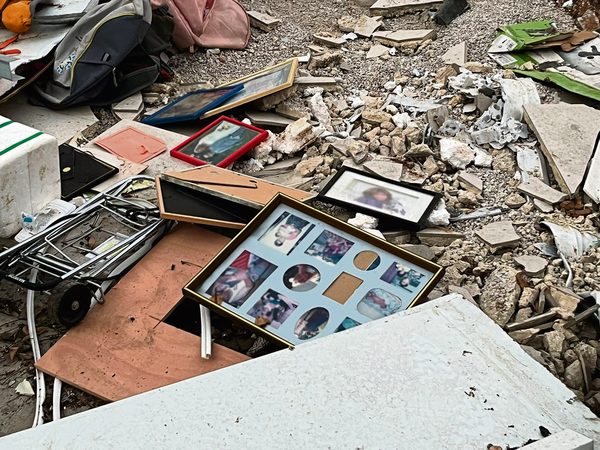
Rebecca Davis is The AJN’s head of content.

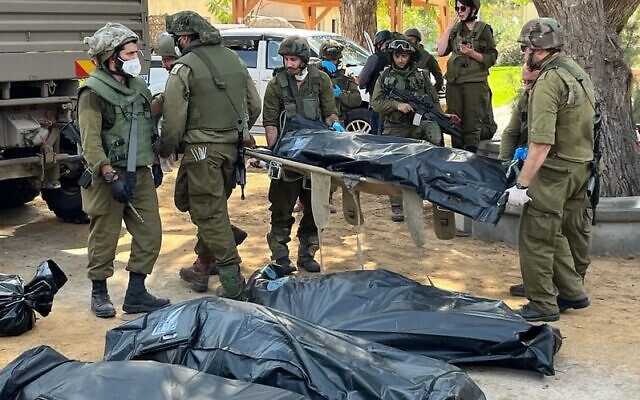
comments